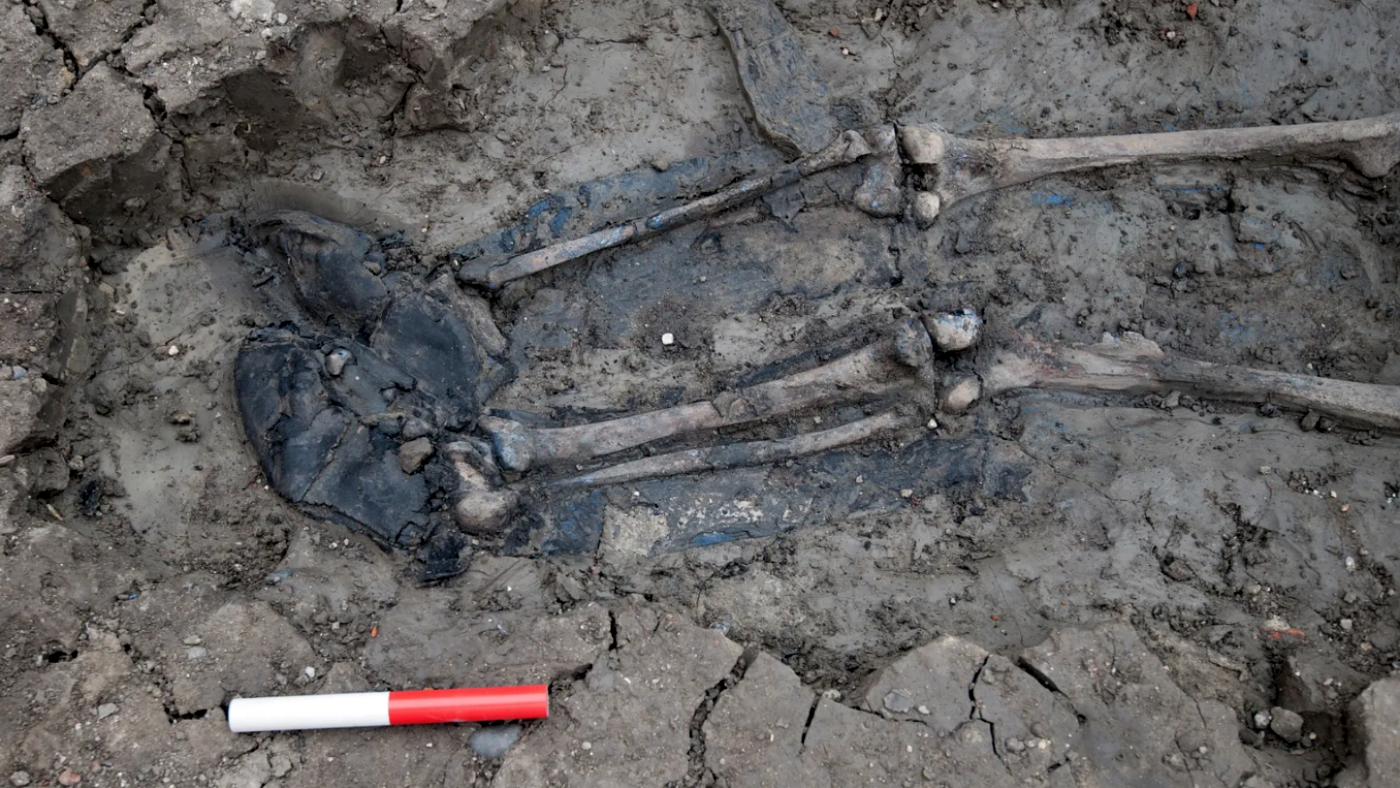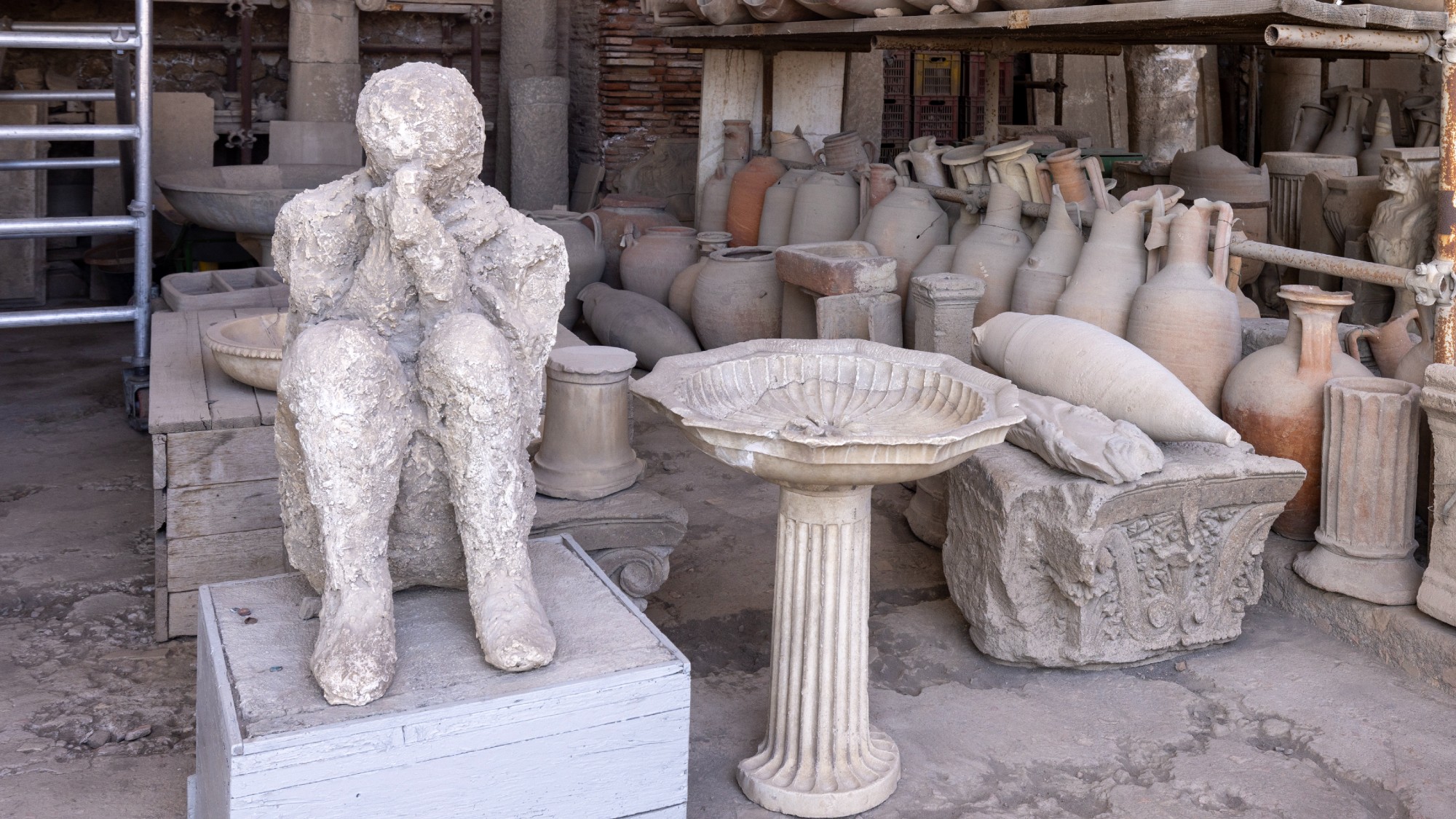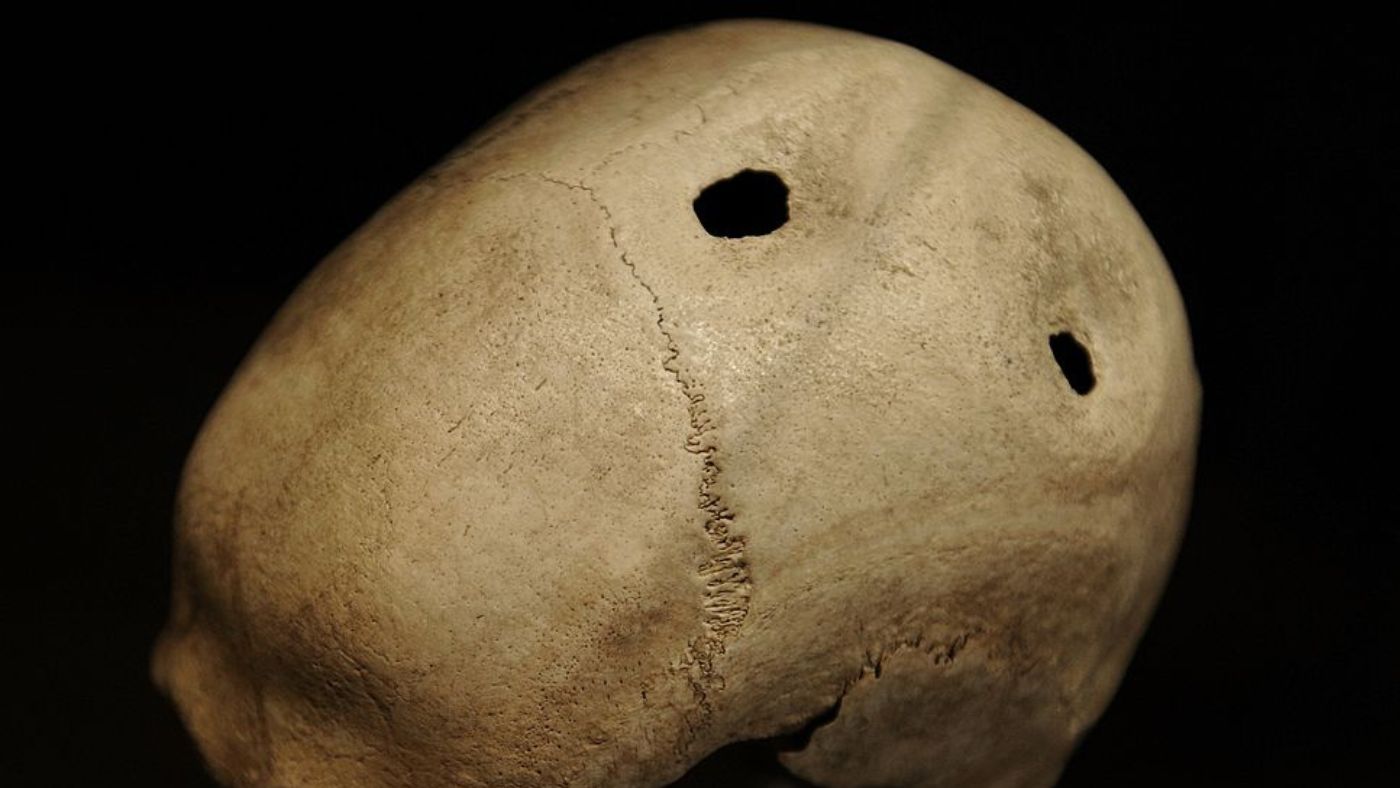Thames archaeologists uncover skeleton in medieval ‘wellies’
Discovery of 500-year-old body in leather waders hailed as ‘extremely rare’

A 15th century man whose skeleton has been unearthed after 500 years in the mud of the River Thames was still wearing his thigh-high waders.
Archaeologists found the skeleton of what The Guardian has already termed “the man in the medieval wellies” in the riverbank near Bermondsey, south London, while excavating at construction sites for the Thames Tideway Tunnel.
The unusually well-preserved waterproof footwear helped historians estimate that the unknown man died in the late 15th century, around the time Henry VII acceded to the throne as the first of the Tudor monarchs.
The Week
Escape your echo chamber. Get the facts behind the news, plus analysis from multiple perspectives.

Sign up for The Week's Free Newsletters
From our morning news briefing to a weekly Good News Newsletter, get the best of The Week delivered directly to your inbox.
From our morning news briefing to a weekly Good News Newsletter, get the best of The Week delivered directly to your inbox.
“It’s extremely rare to find any boots from the late 15th century, let alone a skeleton still wearing them," Beth Richardson of the Museum of London Archaeology (Mola) told National Geographic.
The man is estimated to have been around 35 years old when he died. Examination of his remaining teeth revealed grooves which historians believe could be the result of passing rope through his teeth, suggesting he may have worked as a fisherman or a sailor.
Whatever his occupation, he was “very powerfully built" says Niamh Carty, a skeletal specialist at Mola, the result of “a lot of heavy, repetitive work over a long period of time”.
The physical of demanding manual labour left permanent marks, the National Geographic reports. Despite his relative youth, “the booted man suffered from osteoarthritis, and vertebrae in his back had already begun to fuse as the result of years of bending and lifting”.
A free daily email with the biggest news stories of the day – and the best features from TheWeek.com
As well as being a fascinating and rare historical artefact, the waders may even offer an insight into how the man came to end his life in the silt of the Thames, his resting place for more than five centuries.
Leather “was an expensive commodity in Tudor times”, notes CNN, and would probably have been removed from a body before formal burial, leading historians to suspect that the man died at the scene, possibly after falling into the water or becoming stuck in the tidal mud.
“His family never had any answers or a grave,” says Carty. “What we're doing is an act of remembrance. We're allowing his story to finally be told.”
Excavation projects linked to the construction of the tunnel, nicknamed the “super sewer”, have already uncovered a Victorian dry dock submerged several metres below surface mud, Infoworks reports.
-
 The Week’s big New Year’s Day quiz 2026
The Week’s big New Year’s Day quiz 2026Quiz of the Year How much do you remember about 2025’s headlines? Put yourself to the test with our bumper quiz of the year
-
 Is tanking ruining sports?
Is tanking ruining sports?Today's Big Question The NBA and the NFL want teams to compete to win. What happens if they decide not to?
-
 ‘Netflix needs to not just swallow HBO but also emulate it’
‘Netflix needs to not just swallow HBO but also emulate it’instant opinion Opinion, comment and editorials of the day
-
 Homo floresiensis: Earth’s real-life ‘hobbits’
Homo floresiensis: Earth’s real-life ‘hobbits’Under the Radar New research suggests that ‘early human pioneers’ in Australia interbred with archaic species of hobbits at least 60,000 years ago
-
 Mendik Tepe: the ancient site rewriting human history
Mendik Tepe: the ancient site rewriting human historyUnder The Radar Excavations of Neolithic site in Turkey suggest human settlements more than 12,000 years ago
-
 The seven strangest historical discoveries made in 2025
The seven strangest historical discoveries made in 2025The Explainer From prehistoric sunscreen to a brain that turned to glass, we've learned some surprising new facts about human history
-
 Scientists have found the first proof that ancient humans fought animals
Scientists have found the first proof that ancient humans fought animalsUnder the Radar A human skeleton definitively shows damage from a lion's bite
-
 Tutankhamun: the mystery of the boy pharaoh's pierced ears
Tutankhamun: the mystery of the boy pharaoh's pierced earsUnder the Radar Researchers believe piercings suggest the iconic funerary mask may have been intended for a woman
-
 The discovery that sheds new light on the Knights Templar
The discovery that sheds new light on the Knights TemplarIn Depth Medieval tombs linked to the Holy Grail crusaders have been uncovered in a Staffordshire churchyard
-
 Rare brain surgery performed 3,500 years ago
Rare brain surgery performed 3,500 years agoSpeed Read Archaeologists discover punctured skull dating back to 1500BC below floor of Israel home
-
 Windrush activist lists ‘100 great black Britons’
Windrush activist lists ‘100 great black Britons’Speed Read The Black History Month project celebrates individuals who collectively span the past 400 years